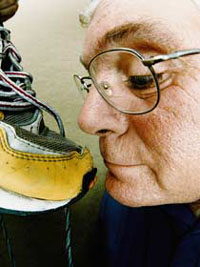New device reproducing aromas may add odour files on the Internet
When we choose food in a supermarket we often use our nose to find whether the food is good or bad. Today scientists are about to invent a device that will help on-line shoppers to sniff the products they are going to buy.

Engineers at the Tokyo Institute of Technology in Japan are building an odour recorder capable of doing just that. Simply point the gadget at a freshly baked cookie, for example, and it will analyse its odour and reproduce it for you using a host of non-toxic chemicals.
Early tests have shown it can successfully identify and ‘playback’ the smell of orange, apple, melon, banana and lemon, thanks to 15 chemical-sensing microchips or, ‘electronic noses’ that pick up the fruit’s natural odour, contractoruk.com reports.
The device could be used to improve online shopping by allowing you to sniff foods or fragrances before you buy, to add an extra dimension to virtual reality environments and even to assist military doctors treating soldiers remotely by recreating bile, blood or urine odours that might help a diagnosis.
While a number of companies have produced aroma generators designed to enhance computer games or TV shows, they have failed commercially because they have been very limited in the range of smells they can produce, says Pambuk Somboon of the Tokyo team, New Scientist reports.
So he has done away with pre-prepared smells and developed a system that records and later reproduces the odours. It's no easy task: "In video, you just need to record shades of red, green and blue," he says. "But humans have 347 olfactory sensors, so we need a lot of source chemicals."
Somboon's system will use 15 chemical-sensing microchips, or electronic noses, to pick up a broad range of aromas. These are then used to create a digital recipe from a set of 96 chemicals that can be chosen according to the purpose of each individual gadget. When you want to replay a smell, drops from the relevant vials are mixed, heated and vaporised. In tests so far, the system has successfully recorded and reproduced the smell of orange, lemon, apple, banana and melon. "We can even tell a green apple from a red apple," Somboon says.
Smell researchers are interested in the institute's work. "It would be interesting to know just what range of smells this new system can detect and recreate," says Stephen Brewster, a computer scientist at the University of Glasgow, UK, who is studying whether smell can be used to help people quickly identify digital photos without opening them. "This could be an interesting delivery system for our work."
Source: agencies
Prepared by Alexander Timoshik
Pravda.ru
Discuss this article on Pravda.ru English Forum
Subscribe to Pravda.Ru Telegram channel, Facebook, RSS!





